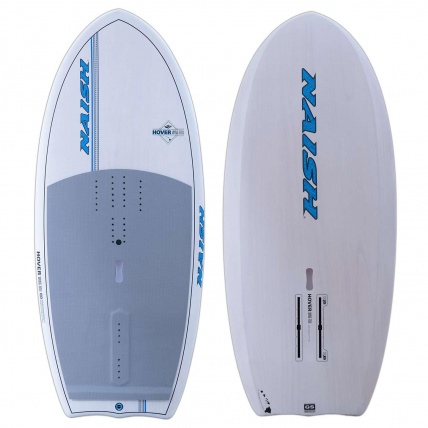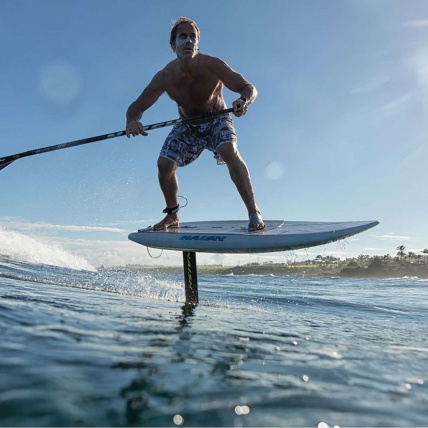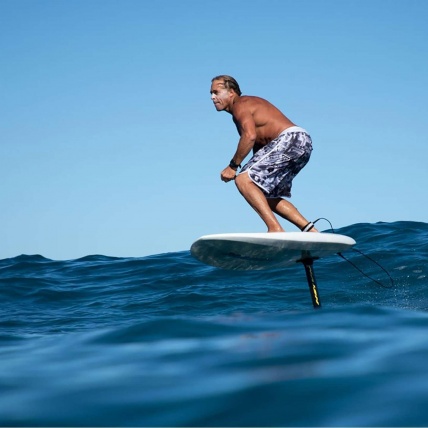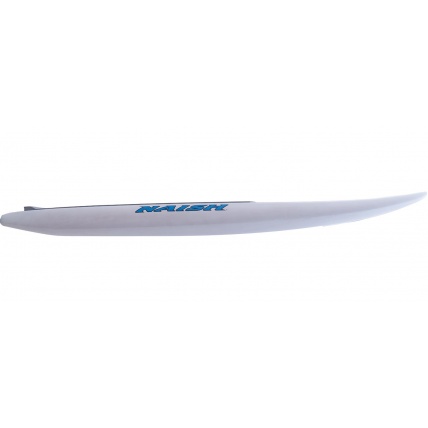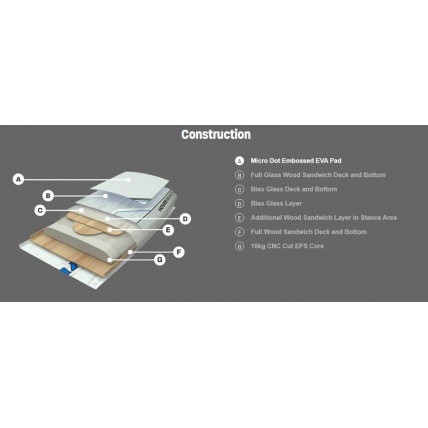Related Products
The latest generation of the Hover Wing Foil Boards have set the standard for SUP Foil Surfing and Wing Surfing for design, construction and weight for this area. The new S26 range of boards are perfect for Wing Surfing or use as SUP Foil board and SUP downwind foil board especially joined up the the Jet Foil Hydrofoils. This model has a revised outline and narrower tail, increased nose rocker and more bottom shaping and concave. There are multiple foot strap insets if you decide to fit straps. The board rocker is balance to get the board to fly smoothly parallel to the water surface and the track boxes underneath fit a massive range of different foils that could be paired with the board.
The GS version of the Hover Wing Boards range is using a S-Glass/wood sandwich with carbon and Kevlar reinforcements and is available in two different volumes 110L and 125L.
The Hover Wind Foil GS has the same shape and overall performance as it's carbon ultra brothers but in a more durable and affordable construction. Add your foil kit of preference and rip it up!

Naish S26 Hover Wing Foil Board Features:
- Ledge Handle & Additional Bottom Handle
- Micro Dot Embossed EVA Pad
- High Density PVC Foil Track System
- Beveled Rail Design
- Concave Deck Design
- Tail Kick Lift-off Design
- Bottom Double Concave to V Nose
- Footstrap Insert Options (No Straps Included)
- Automatic Pressure Valve
| Model/Size | Length | Width | Thickness | Volume |
|---|---|---|---|---|
| Hover Wing Foil GS 110 | 5'10"/177.8 cm | 29"/73.7 cm | 4 3/10"/10.9 cm | 110 L |
| Hover Wing Foil GS 125 | 6'4"/193 cm | 31"/78.7 cm | 4 2/5"/11.2 cm | 125 L |

Choosing the right size of board.
The board selector below is a rough guide to help determine Hover Wing Foil board size based on rider weight and skill level. We consider a “beginner” a rider who has no previous board sport experience. Keep in mind that additional factors, such as wind conditions, foil, and Wing-Surfer size will play an important role in the selection of the right board size. Generally, we recommend erring on the side of a floatier board with a volume that matches rider weight (for example, an 80-kilo/176-pound rider will need at least an 80L board or larger). Riding a “sinker” will work in locations with steady, strong winds, while floatier boards prove to be a safer choice as they allow the rider to get back to shore even if the wind drops under a foilable limit.
110 L:
- For beginners up to 80 kg
- Intermediate riders up to 95 kg
- Advanced riders up to 115 kg
125 L:
- For beginners up to 95 kg
- Intermediate riders up to 105 kg
- Advanced riders up to 130 kg

